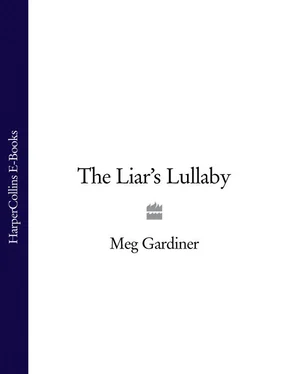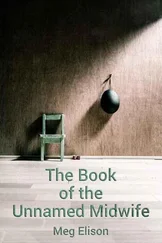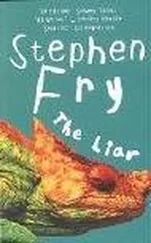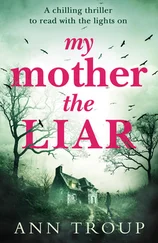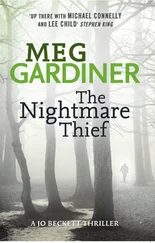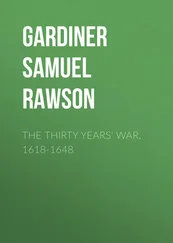1 ...8 9 10 12 13 14 ...18 The news switched to a White House press conference. Robert McFarland was praising Tasia. He was waxing melodic about her talent.
The thrill of victory subsided. Petty sloughed off the fatigue jacket and sat heavily on the bed. Generosity of spirit… was McFarland joking? The president of the United States was beatifying Saint Tasia, the Holy Cow.
Slut, thief, liar.
A heart as big as the sky. Letting out a moan, Petty thundered to the table, grabbed the artifact, and threw it at the television.
This was insane. It was…a spell. The vixen had bewitched even the leader of the free world.
All Petty’s work had been in vain. The king rat of politicians, a man of the smoothest tongue, a hypnotist, was spreading the lie. People would buy it. Heart as big as the sky would become conventional wisdom. It would twist people’s minds, turn them into Tasia-lovers. It would burrow under the skin of people who needed protection. Tasia, thief of hearts, would steal yet again, just as she’d stolen from NMP, but this time from beyond the grave.
Her death hadn’t ended the battle. It had only intensified it.
Petty heard a voice, a whisper, a promise. Don’t tell. You’re my eternal love. Shh.
Deep breath. It was time to slough off Noel Michael Petty. Time to put on the camouflage that kept the Protector safe and anonymous. It worked on the Net, where nobody knows you’re a dog. Now, offline, Petty needed to assume the guise. Full-time, with no slipups.
Going into the bathroom, Petty faced the dingy mirror. From now on, you’re not Noel. You’re not a sweaty fan who follows the tour around the country. You’re him. NMP.
Tasia hadn’t seen the end coming. Neither had Searle Lecroix, though he’d been onstage, staring at her. And judging from the news footage, Lecroix still didn’t see. Tasia still held him in her thrall. And now the president was hypnotizing the public into believing the same thing. Somebody had to stop it.
Somebody needed to expose Tasia once and for all. End the love affair with her. Get proof, and make noise, and shut the liars up for good.
You are NMP, the archangel, the big bad bastard. You are the sword of truth.
You’re the man.
IN THE MORNING JO WOKE TO THE RADIO.
“…investigation into the death of Tasia McFarland. A police source tells us that a psychiatrist has been hired to evaluate Tasia’s mental state.”
She sat up.
“Our source believes that the police are working on the theory that Tasia committed suicide, and want a psychological opinion to back it up.”
She reached for the phone. Saw the clock: six twenty. Too early to harangue Lieutenant Tang about departmental leaks.
She heard the foghorn. She kicked off the covers, pulled on a kimono, stumbled to the window, and opened the shutters. Fog skated across the bay and clung to the Golden Gate Bridge. But uphill, the sun was tingling through the clouds. The magnolia in the backyard looked slick in the early light.
The news continued. Not a word about a merchant ship on fire and down by the stern five hundred miles off shore. Not a word about the 129th Rescue Wing. Accidents at sea could entangle rescuers in disaster, and she listened, shoulders tight, for the words Air National Guard. Nothing.
She grabbed her climbing gear and drove to Mission Cliffs. She found a belay partner and spent forty-five minutes on the gym’s head wall. It soothed her. Hanging fifty feet off the ground, with nothing but a void between her and a broken neck, always cleared her head.
She was at her desk by eight. She’d finally cleared out Daniel’s mountain bike and Outside magazines, and turned the front room into her office. She kept gold orchids on the bookcase and her favorite New Yorker cartoon framed on the wall—where a drowning man yells, “Lassie! Get help!” And Lassie goes to a psychiatrist.
Normally she began a psychological autopsy by reading the police report and the victim’s medical and psychiatric records. But those weren’t yet available. To determine NASH—whether a death was natural, accidental, suicide, or homicide—she needed to assess not only the victim’s physical and psychological history but also his or her background and relationships. Jo interviewed family, friends, and colleagues, and looked for warning signs of suicide or evidence that anyone might have intended the victim harm. She built a timeline of events leading up to the day of the victim’s death.
Since she didn’t have records, she read press accounts of Tasia McFarland’s psychiatric history. It was sad and brutal. And Tasia hadn’t hesitated to talk about it.
Tasia had been diagnosed with bipolar disorder at thirty-two. But she’d whipped between mania and depression for years before that. Volcanic highs and hideous lows had played out in public—tantrums, car wrecks, drug binges, and flights of creativity—as she veered from teen singing sensation to washed-up party animal to comeback queen. In short, as analyzed by Rolling Stone, Mother Jones, and People magazine: sex, drugs, and rock ‘n’ roll.
But bipolar disorder was a devastating diagnosis. The DSM-IV, the Diagnostic and Statistical Manual of Mental Disorders , defined Bipolar I Disorder as the occurrence of one or more “Manic Episodes or Mixed Episodes,” though people often had major depressive episodes as well.
During a manic episode, people didn’t need sleep and didn’t feel tired—for a week, a month, two months. They felt on top of the world. They might learn new languages or take up a new instrument. Their extraordinary energy and sense of power came on spontaneously, without being triggered by any outside event, such as graduating from college or winning an Oscar, that could generate euphoria.
Jo wondered about Tasia, revved into the red zone on the night she sang a hit song to a stadium crowd in her hometown.
Manic people could be gregarious and entertaining. In fact, physicians training in psychiatry were told: If you’re highly entertained by a patient, consider mania as a possible diagnosis. But while manic people could be lovable, they could also be exhausting.
And when patients dropped into depression, they crashed. Guilt and hopelessness overwhelmed them. Suicide was common.
And mixed episodes were the roughest of all: A person’s mood disturbance met the criteria for manic and major depressive episodes simultaneously. Mixed episodes were difficult to diagnose. Jo believed they were the state in which people were most likely to commit suicide.
She thought about the way Rez Shirazi, the stuntman, had described Tasia: hyper but dismal.
She got herself a cup of coffee. She needed Tasia’s prescription records and toxicology results. When well medicated, people with bipolar disorder could be accomplished and creative. They became physicists, computer scientists, artists. A number of famous classical composers had been bipolar.
But people often went off their meds because they loved feeling manic. They loved the explosion of creativity brought on by mania.
“Art and madness” was a cliché. But Jo had attended a med school lecture series on the mind and music. Strong evidence existed that Schumann had bipolar disorder. Gershwin may have had ADHD. And composers’ mental states influenced their compositions. Bipolar composers, she recalled, loved repetitive melodic motifs and sometimes became obsessed with particular sounds or tempos.
Jo listened again to “The Liar’s Lullaby.” Her musical ear wasn’t sharp enough to pick out clues buried in the melody, but the lyrics were disturbing enough. You say you love our land, you liar / Who dreams its end in blood and fire. The third verse was less eerie, but nonetheless sad.
Читать дальше
